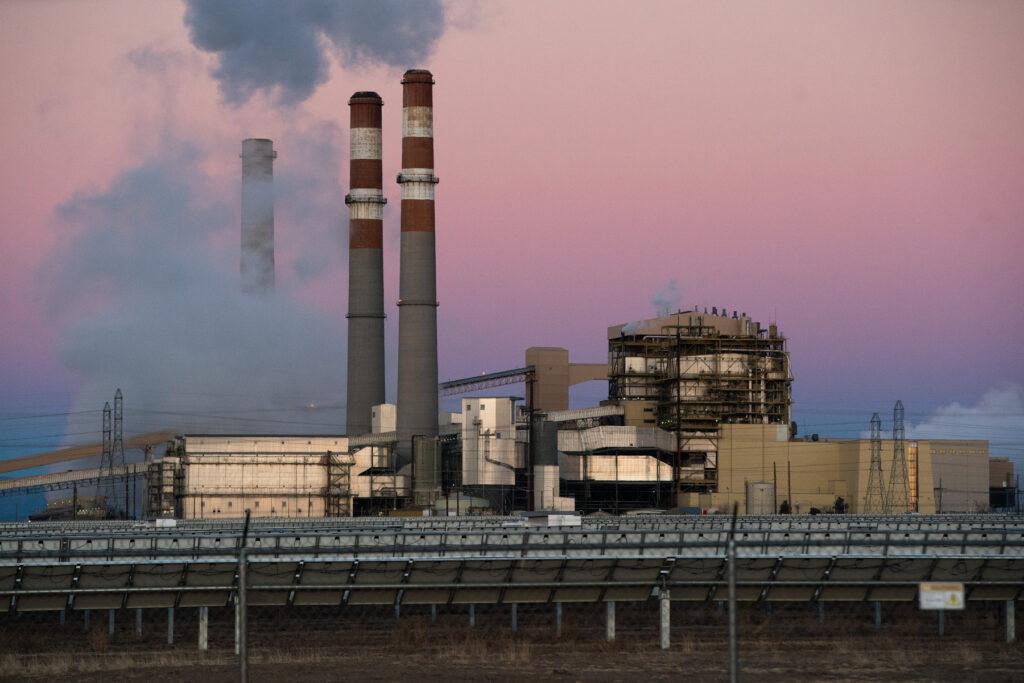
Xcel Energy wants to replace the state’s largest power plant with a slew of new energy projects it says will cut its climate-warming emissions and generate enough electricity to meet surging demands from data centers, electric vehicles and buildings.
The proposal filed Oct. 15 with state utility regulators is part of the utility’s “just transition plan” that lays out pathways to replace both the electricity and the economic activity generated by the Comanche 3 coal plant in Pueblo — one of the state’s largest sources of greenhouse gases.
“We are committed to helping our employees and the communities where these plants are located as we continue to responsibly move away from coal,” Robert Kenney, Xcel Energy’s president, wrote in a statement.
The massive plan from Colorado’s largest utility describes five broad possible scenarios that envision adding a mix of renewables, fossil fuels and “advanced tech” energy projects like geothermal and nuclear power.
Xcel Energy’s initial proposal doesn’t lay out the exact location and details of each project. Additional information will come through a months-long hearing process as Colorado’s Public Utilities Commission considers feedback from the public and other groups before voting on a final proposal.
Xcel Energy has not detailed the cost of the proposal, but the plan could raise the average customer’s bill by nearly 2.4 percent over its first five years. The final price tag will come after clean energy developers bid on the projects during the proposal’s second stage, according to an Xcel Energy spokesperson.
The new energy projects Xcel Energy is considering include:
- Building a mix of new wind, solar, long-term energy storage and natural gas plants by 2031
- Cutting out new gas plants and investing in massive battery storage projects for wind and solar energy
- Bringing new geothermal projects online in 2031 and a new nuclear reactor online in 2037
The natural gas plants outlined in Xcel Energy’s proposal would be designed to capture and store greenhouse gas emissions before they reach the atmosphere, according to its filing.
Xcel Energy says the gas plants might be necessary since building massive battery storage plants is difficult. But some environmental groups are skeptical.
“A new gas plant would be bad for Pueblo, bad for every one of Xcel Energy’s customers, bad for our climate, and bad for our air quality,” Eric Frankowski, executive director of Western Clean Energy Campaign, wrote in a statement.

The proposal comes just nine months after regulators signed off on a separate $13 billion Clean Energy Plan for clean energy projects that will meet state-mandated climate goals and generate power through 2028.
The new plan is a blueprint for cleaner energy through 2031 when the company expects electricity demands to soar dramatically from new data centers, EV adoption and more buildings using electricity for heating and cooling.
In its filing, Xcel Energy says its plan would also incentivize developers to build renewable projects in Routt, Pueblo and Morgan counties, which are slated to lose millions in tax revenue once their coal plants close.
Just transitions are just not easy
A “just transition” describes the process of moving away from fossil fuels without hollowing out an economy by causing major job cuts, for instance. But closing a plant as large as Comanche 3, which is set to stop operating by 2030, is not easy.
Comanche 3 opened in 2010 and is part of Comanche Station, a sprawling facility that once housed three coal-fired plants in Pueblo. While none of the station’s electricity stays in Pueblo and is instead sent up to Denver and the Front Range, Xcel pays the county $25 million each year in taxes to fund services like road repairs and schools.

Comanche 3 has at times been the largest single source of carbon dioxide pollution in the state. The three Comanche plants spewed at least two million tons of toxic pollution into Pueblo’s air in 2019, federal data show.
That same year, state lawmakers enacted a law requiring utilities to phase out how much electricity they generate from fossil fuels. To meet those targets, the law required utilities to submit detailed clean energy plans to regulators.
As part of its plan, Xcel agreed to pay millions of dollars to Pueblo, Morgan and Routt counties, either as direct payments or indirect investments, like building a non-fossil fuel energy project.
In December 2023, Xcel released a study about replacing Comanche 3, which tentatively ruled out options like a small nuclear reactor or gas turbines because of their cost and how long they would take to get off the ground.
But an advisory committee — set up by Xcel and composed of Pueblo residents — reached a much different conclusion. In their 2024 report, the committee wrote that “only advanced nuclear generation will make Pueblo whole and also provide a path to prosperity.”
Pueblo debates nuclear
Pueblo County commissioners held three town hall discussions in 2024 focused on the potential for building a nuclear plant to replace the power generation at Comanche 3. In February, advisory committee co-chair Corinne Koehler told attendees gathered for the first town hall that how the community moves forward after the coal station's closure would eventually have broad-reaching implications.
“We heard from the Pueblo Library that with the loss of taxes from Comanche, they would have to close a couple of the libraries,” Koehler said. “It's just amazing how this is going to affect every aspect of our community.”
Members of the advisory committee said advanced nuclear technology was "the clear path" among options they studied to replace the coal plant’s tax revenue and jobs while still meeting carbon reduction goals.

Some residents complained the February town hall and a second in March featured speakers too wedded to the nuclear option and argued the discussion didn’t fully consider the potential economic and environmental downsides.
In response, commissioners invited David Schlissel — a Massachusetts-based analyst with the Institute for Energy Economics and Financial Analysis — to speak at a September town hall, where he offered a more pessimistic take on the practicality of a nuclear power plant in Pueblo.
“The nuclear industry has a long history of huge cost overruns and years-long schedule overruns, and by huge I mean multi-billion dollars,” Schlissel said, pointing to the nation's newest nuclear power source, Georgia's more than $20 billion over-budget Vogtle plant.
Xcel Energy’s new plan lists nuclear power as a possible option, though it would come online long after Comanche 3 shuts down. In its filing, Xcel Energy says it’ll eventually need advanced tech like nuclear and geothermal to completely cut out its carbon emissions by 2050.







